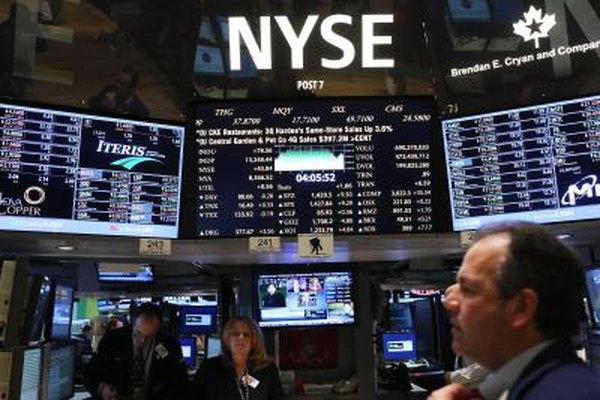Who Buys Stock That Is Sold on the Market?
Stock markets move by supply and demand to find a buyer for every seller.
Spencer Platt/Getty Images News/Getty Images
A stock market functions to match buyers and sellers. Every time someone sells stock, there is a buyer on the other side of the trade who wants to own that stock. It can be difficult to understand why someone else would want to buy the stock you are selling. The movement of share prices up and down is the mechanism that allows anyone who wants to buy or sell shares to be able to find a match on the other side of the trade.
Market Orders
If you tell your broker -- either over the phone or through your online account access -- to sell shares of stock, that order will go in as a market order. A market order is filled at the best available price offered by someone who has entered an order to buy those shares. Orders into the stock market can be broadly categorized as market and limit orders. A market order does not have a specified price, allowing market prices to determine the price at which shares will be bought and sold by the two parties involved. A limit order has a set price and this order will not be completed until the other side agrees to accept the limit price.
Bid and Ask Prices
Limit orders at different prices from a large number of market participants stack up in the stock exchange computer systems, waiting for counter-orders to be matched at the limit prices. The result is a bid and ask price on every stock. The bid price is the highest limit order price on a stock and the ask is the lowest sell limit order in the system. For example, a stock is quoted at $50 bid and $50.05 asked. A market order to sell will be filled at the bid price and whoever made the $50 bid will be the buyer of the shares. Behind the best bid and ask prices are other limit orders that would be filled if the share price moves. In the example, there will be other orders in to buy at $49.99, $49.98 and so on. On the asked side, orders will be stacked above the $50.05 best ask price.
Supply and Demand Pressure
Stock prices move as either more buyers or sellers place orders than there are shares being accepted or offered at the bid and ask prices. If the order at the bid of $50 is for 1,000 shares and sell orders for 2,000 shares come into the market, bid offers at the lower prices will start to be filled as soon as the $50 buyer has 1,000 shares. If more buying orders are coming into the market for a stock, the higher ask limit orders will start to fill at higher prices. Since there are a large number of participants in the stock market, the flow of orders in most cases results in smooth changes in stock prices to match buying and selling pressure.
Initial Public Offerings
A special case occurs when a company wants to sell shares into to the market for the first time -- an initial public offering. Since there is no price history for a new company in the market, the underwriters of an IPO go out to large financial companies to get firm orders to buy shares at a pre-set stock price. The initial IPO price is set by analysis and some guesswork as to where the shares will trade when they first hit the market. The initial institutional buyers of IPO shares then start to sell those shares on the exchanges, where regular investors can get a chance to invest in the new, publicly traded company.
References
Writer Bio
Tim Plaehn has been writing financial, investment and trading articles and blogs since 2007. His work has appeared online at Seeking Alpha, Marketwatch.com and various other websites. Plaehn has a bachelor's degree in mathematics from the U.S. Air Force Academy.

